Five species that provide a vital link in the Chesapeake Bay food web
As important predator species in the Chesapeake Bay food web, fish like striped bass, Atlantic croaker and white perch rely on “forage”—the smaller fish, shellfish and invertebrates that underwater predators feed on. Though many aren’t well known, these forage species are the unsung heroes of our waters. Not only are they a critical source of food for larger fish and birds—some also break down dead plants and wildlife that fall to the bottom of our waterways, filter water or are used in livestock feed and commercial products. The five species listed below are among the most important forage species to the Bay’s ecosystem and history.
1. Bay anchovy (Anchoa mitchilli)
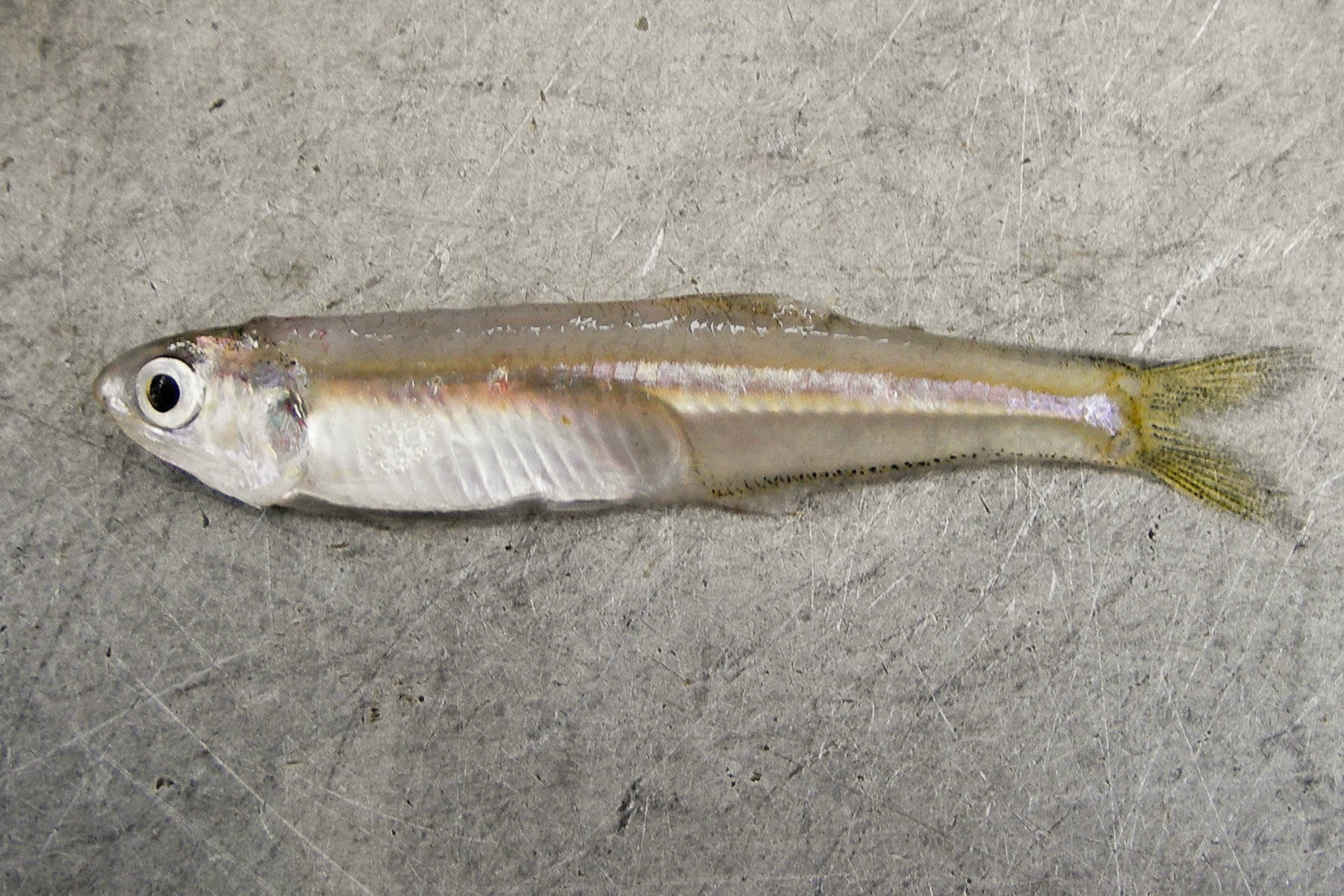
The bay anchovy is a small, translucent fish with a silver stripe that runs along its sides. It is the most abundant fish in the Bay, making it an important food source for a variety of predators. Females can spawn up to 50 times each season, producing more than 1,000 eggs in each batch. On average, more than 50 billion juvenile bay anchovies are produced in the Bay each year.
2. Atlantic menhaden (Brevoortia tyrannus)
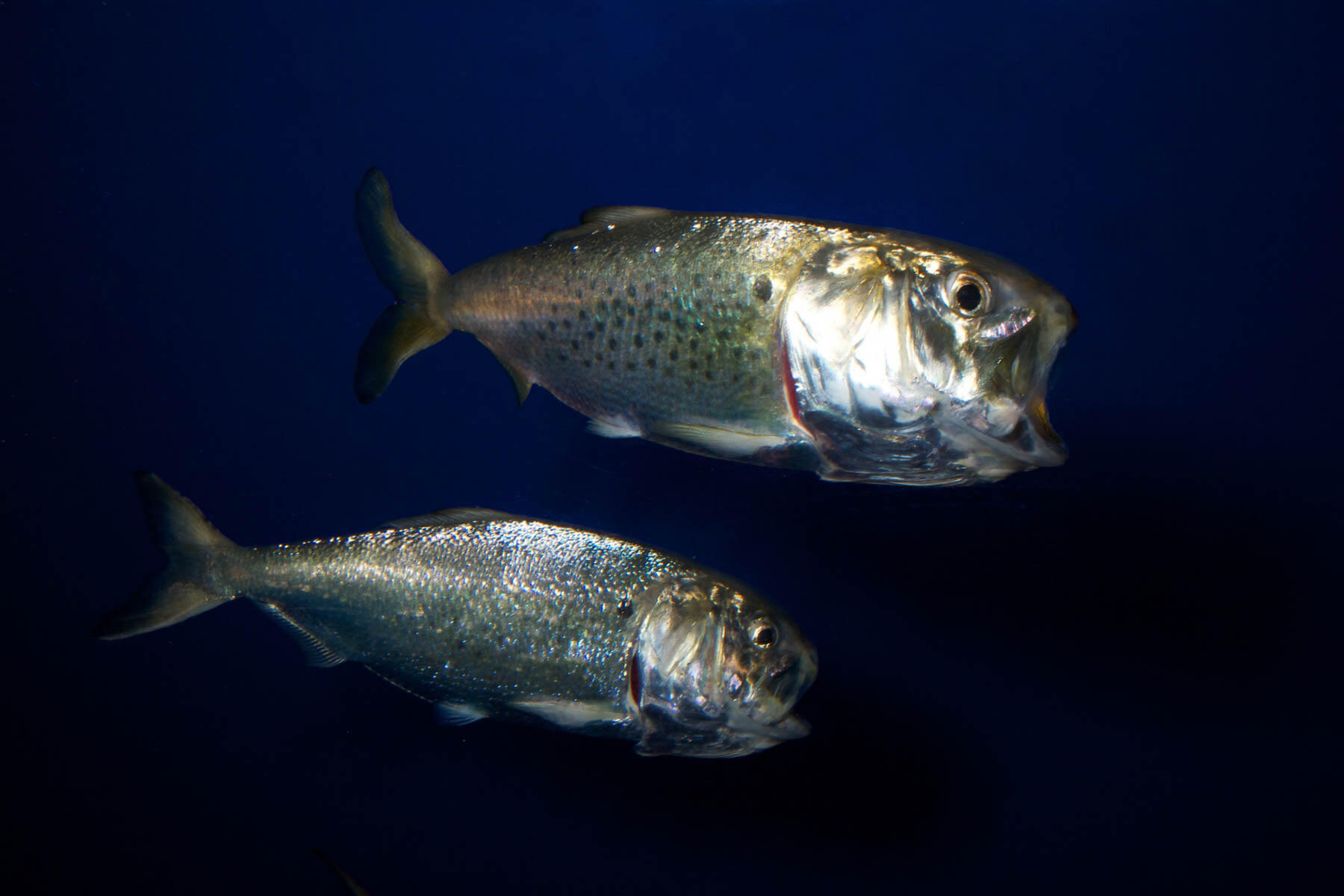
The Atlantic menhaden is a silvery-blue herring with dark spots on the sides. It is a filter-feeder that feeds by swimming rapidly to capture water in its open mouth, then filtering out the plankton they feed on. Because the Bay has a rich supply of plankton for menhaden to eat, it is an ideal nursery area for juveniles. In addition to providing a source of food for larger species, menhaden also support one of the largest commercial harvests on the Atlantic coast. They are too small and oily for humans to eat, so most menhaden caught in the Bay are processed for fish oil and livestock feed.
3. Bristle worms (Polychaeta)
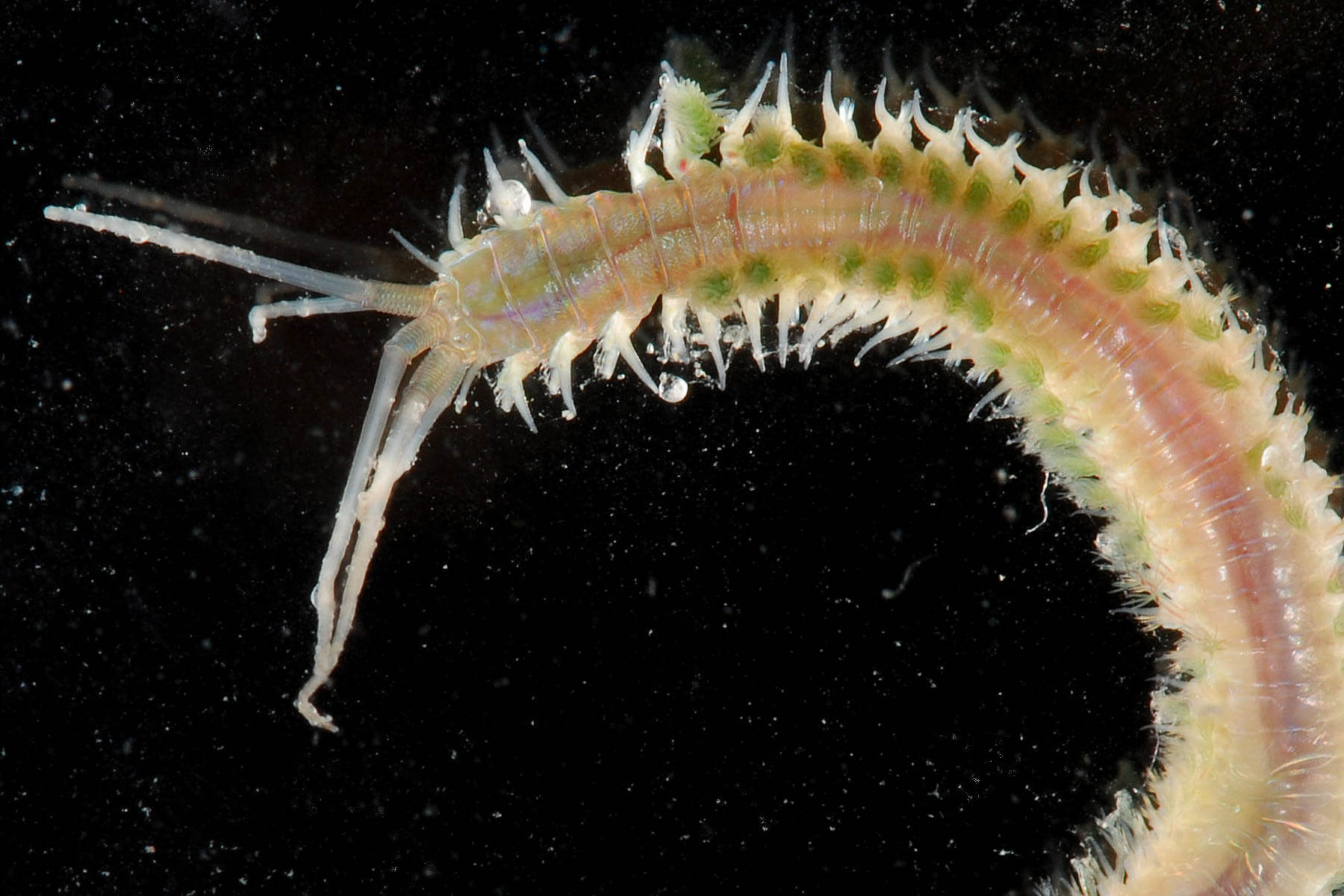
Polychaetes, commonly known as bristle worms, are invertebrates with soft, segmented bodies and tiny, hair-like bristles along each side. More than 110 species of bristle worms have been recorded in the Chesapeake Bay, and there are at least 10,000 known species worldwide. Bristle worms are benthic organisms, meaning they live along the bottom of the Bay.
4. Mysids (Mysidae)
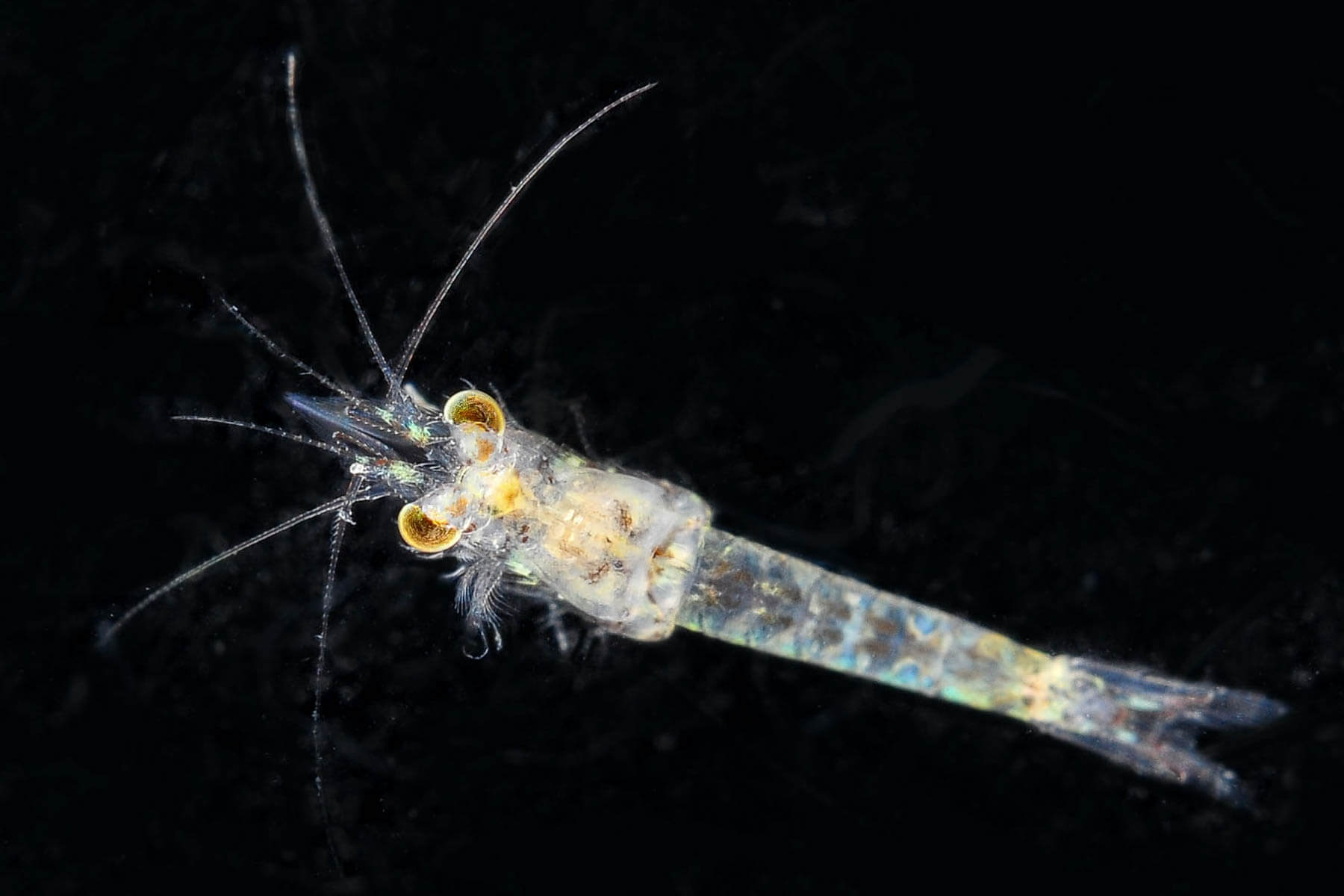
Mysids, another group of benthic organisms, are tiny crustaceans that serve as food for a variety of important predator species. They are commonly known as opossum shrimp because their young are reared in brood pouches, similar to opossums and other marsupials. However, despite the resemblance, they aren’t technically shrimp. Multiple species of mysids can be found in the Chesapeake Bay.
5. American shad (Alosa sapidissima)
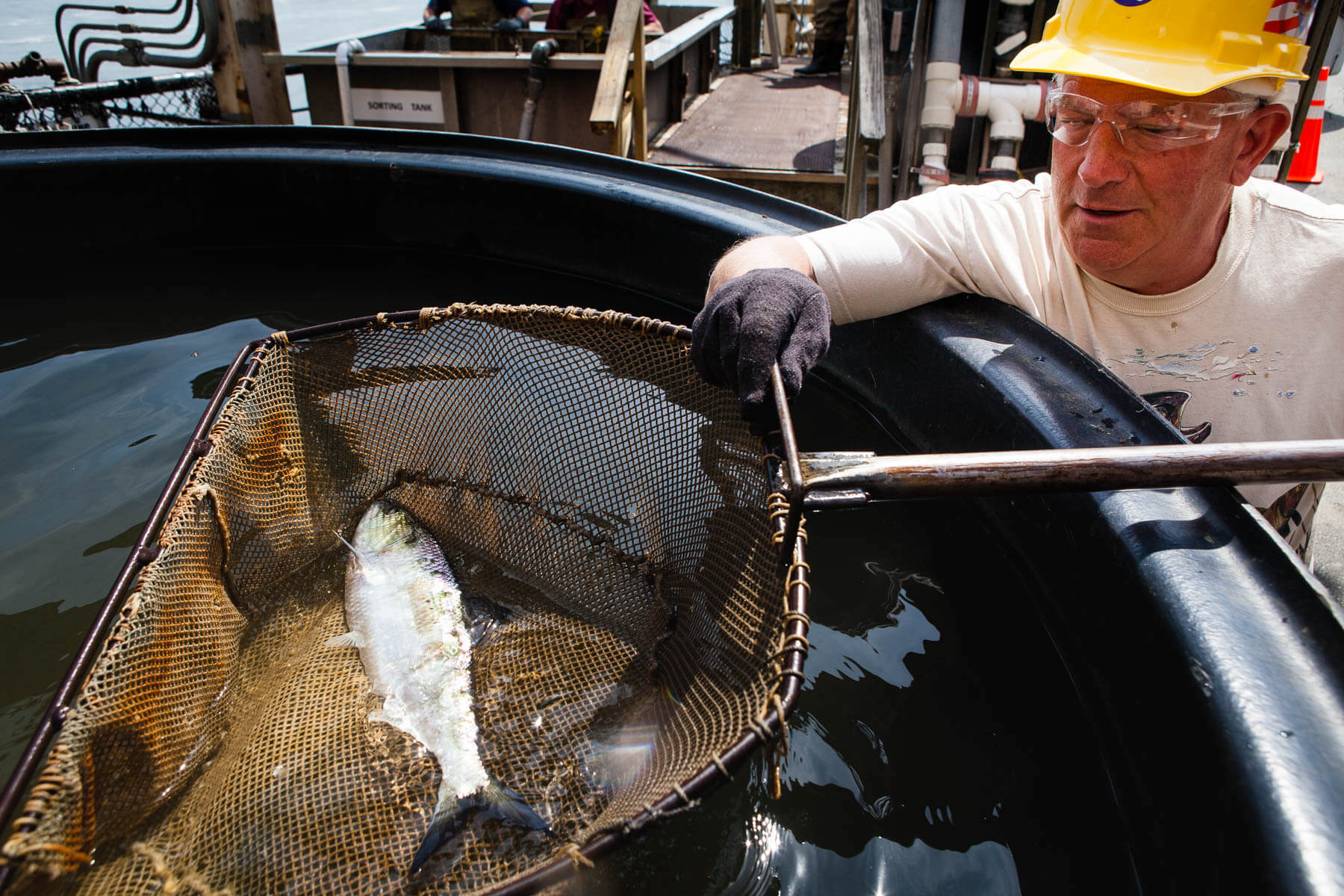
American shad are the most well-known river herring in the Chesapeake Bay. But pollution, historic overfishing and the construction of dams that block the migratory fish from reaching their spawning grounds have lowered shad populations. Because they are no longer as abundant as they once were, shad currently have a more limited role as a forage species. By restoring shad in the Chesapeake, we could boost not only their own populations, but also the populations of fish higher up the food chain.
Because forage species play such an important role in the Bay’s ecosystem, the Chesapeake Bay Program chose forage fish as one of 31 outcomes in the Chesapeake Bay Watershed Agreement. Despite their importance, not enough is known about the species that make up the forage base and how they interact with their environment. Our Forage Action Team is working to develop indicators that would allow us to better understand and monitor populations of forage species. Learn more about their work on ChesapeakeProgress.

Comments
overharvesting of menhaden inches bay by omega protein is resulting in starvation of many osprey to a point where their where sustaining their population is insustainable. three nests in viewing distance of my home have had no babies survive for the past two years. babies return from their migration back to the bay two years after being born - who will return if none survive. see award winning video attached.
https://youtu.be/IKR-DHwlZlU
Thank you!
Your comment has been received. Before it can be published, the comment will be reviewed by our team to ensure it adheres with our rules of engagement.
Back to recent stories